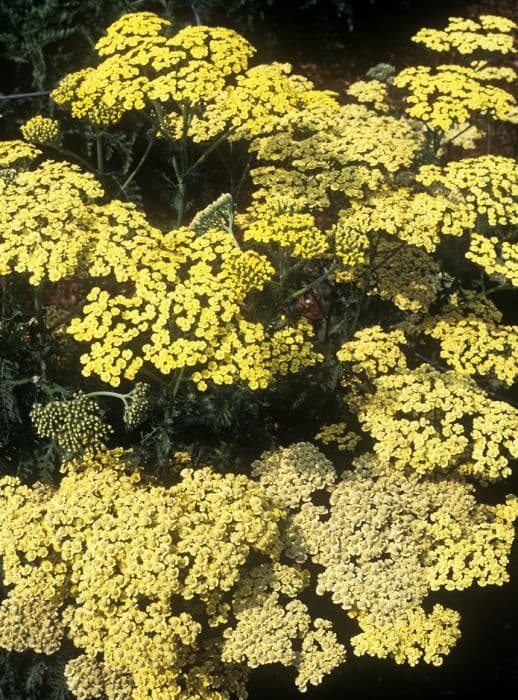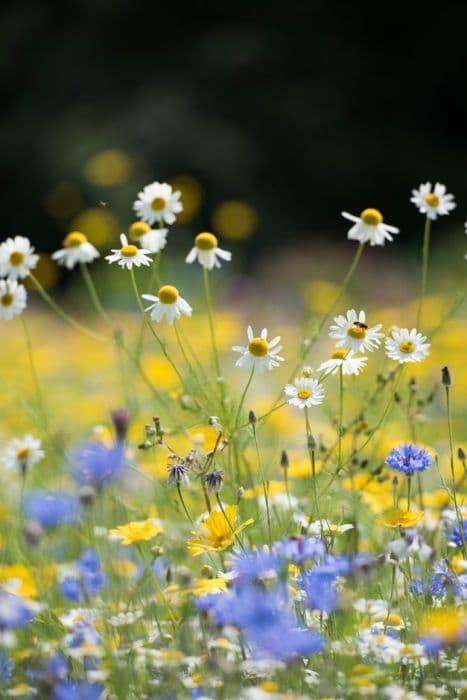Gerbera Daisy Gerbera Everlast Pink = 'Amgerbpink' (Everlast Series)
![gerbera [Everlast Pink]](/_next/image?url=https%3A%2F%2Fplants-admin.emdemapps.com%2Fimages%2Fplants%2F%2Fimages%2F604b645d56545.png&w=3840&q=75)
ABOUT
The Gerbera Everlast Pink, part of the Everlast Series, is a striking plant that showcases vibrant pink flowers. Each bloom is characterized by a large, daisy-like shape with a profusion of slender petals radiating outward from a central eye. The central eye is often a darker shade, creating a bold contrast with the light to bright pink petals. Its flowers stand out with their cheerful appearance, often used in bouquets and as a symbol of beauty in gardens. The foliage of the Gerbera Everlast Pink forms a lush, low mound beneath the flowers. The leaves are deep green, with a spoon-like shape and a slightly fuzzy texture, contributing to the plant's dense and textured visual presence. The leaves may have a few shallow lobes, making them appear gently ruffled, which adds to the overall appeal of the plant. Overall, the appearance of Gerbera Everlast Pink is one that exudes happiness and color. Its blooms are plentiful and can bring a continuous splash of pink to any setting, from garden beds to containers. The plant's form is compact and tidy, giving it a charming, well-kept look. This combination of attributes makes the Gerbera Everlast Pink a popular choice among gardeners looking to add long-lasting color to their landscapes.
About this plant
 Names
NamesFamily
Asteraceae.
Synonyms
Gerbera Daisy, African Daisy, Transvaal Daisy, Barberton Daisy.
Common names
Gerbera Everlast Pink = 'Amgerbpink' (Everlast Series).
 Toxicity
ToxicityTo humans
The Gerbera daisy, including the Gerbera Everlast Pink, is generally considered non-toxic to humans. Accidental ingestion of this plant is unlikely to cause anything more than a possible mild gastrointestinal discomfort, if any symptoms at all. It is always advised to discourage eating ornamental plants for safety and to prevent any potential allergic reactions or individual sensitivities.
To pets
The Gerbera daisy is also recognized as non-toxic to pets such as cats and dogs. Should a pet ingest part of a Gerbera Everlast Pink plant, there are typically no harmful effects expected. However, gastrointestinal upset could occur if a pet consumes a large amount of the plant, as with any non-food item ingested by an animal. It is always prudent to monitor pets and keep them from eating plants to avoid any possible issues.
 Characteristics
CharacteristicsLife cycle
Perennials
Foliage type
Evergreen
Color of leaves
Green
Flower color
Pink
Height
0.5-1 feet (15-30 cm)
Spread
0.5-1 feet (15-30 cm)
Plant type
Herb
Hardiness zones
8-11
Native area
South Africa
Benefits
 General Benefits
General Benefits- Colorful blooms: The Gerbera Everlast Pink offers eye-catching pink flowers that add a vibrant splash of color to any garden or floral arrangement.
- Long flowering period: As part of the Everlast Series, this gerbera is bred for a prolonged blooming season, providing flowers from late spring to frost.
- Drought resistance: Once established, this plant is relatively drought tolerant, making it suitable for gardens in drier climates or for gardeners seeking low-water plants.
- Attracts pollinators: The bright flowers of the Gerbera Everlast Pink attract bees, butterflies, and other beneficial insects, promoting pollination in the garden.
- Low maintenance: This variety of gerbera requires minimal maintenance, which is ideal for gardeners of all skill levels or those with limited gardening time.
- Versatile use: The Gerbera Everlast Pink can be used in mixed borders, as a standalone feature, or as a beautiful addition to containers and patio pots.
- Compact size: Its relatively compact growth habit makes it suitable for small gardens or for growing in containers where space is limited.
 Medical Properties
Medical PropertiesThis plant is not used for medical purposes.
 Air-purifying Qualities
Air-purifying QualitiesThis plant is not specifically known for air purifying qualities.
 Other Uses
Other Uses- Photography Prop: The vibrant pink blooms of Gerbera serve as a stunning subject or backdrop for close-up photography, often used by photographers to add a splash of color to their images.
- Edible Cake Decorations: With appropriate cultivation conditions ensuring they are free from pesticides, Gerbera flowers can be used to ornament cakes and desserts, adding a vibrant, edible flair to culinary creations.
- Coloring Agents: Extracts from Gerbera petals could be used as a natural dye for fabrics, providing a subtle pink hue without the need for synthetic chemicals.
- Eco-Friendly Confetti: Dried Gerbera petals can be used as an environmentally friendly alternative to traditional paper confetti at weddings and celebrations.
- Bookmarks: Laminated Gerbera petals can be turned into unique and decorative bookmarks that preserve the beauty of the flower.
- Gerbera Daisy Chains: By threading the stems together, these flowers can be made into decorative daisy chains to wear as a natural accessory or to adorn tables at special events.
- Bath Bombs: Dried Gerbera petals can be included in homemade bath bombs, adding a touch of luxury and color to the bath experience.
- Artistic Inspiration: The striking appearance of the Gerbera can inspire artists and be used as a live model for painting or drawing still life artworks.
- Pressed Flower Art: Gerbera daisies can be pressed and preserved in glass frames, creating beautiful, long-lasting floral art pieces.
- Floral Ice Cubes: Petals of Gerbera daisies can be frozen in ice cubes to add an elegant and colorful touch to beverages at parties and special events.
Interesting Facts
 Feng Shui
Feng ShuiThe Gerbera Daisy is often used in Feng Shui to introduce vibrant energy and encourage happiness and good health in the home. It can be placed in the living room or family areas to enhance positive interactions and uplift moods, or in a sick room to promote recovery and well-being.
 Zodiac Sign Compitability
Zodiac Sign CompitabilityThe Gerbera Daisy is not used in astrology practice.
 Plant Symbolism
Plant Symbolism- Innocence: The bright and cheerful Gerbera commonly symbolizes innocence due to its pure, vibrant appearance.
- Cheerfulness: The Gerbera's large, colorful blooms are often associated with cheerfulness, bringing joy to any environment.
- Gratitude: Gerberas are frequently used in bouquets to express gratitude and appreciation thanks to their uplifting presence.
- Beauty: With its wide range of colors and large, eye-catching flowers, the Gerbera signifies natural beauty.
- Perseverance: As part of the Everlast Series, this particular cultivar may embody the notion of enduring, long-lasting beauty and vitality.
 Water
WaterGerbera daisies require consistent moisture and should be watered deeply whenever the top inch of soil feels dry to the touch. In general, this might be once or twice a week, but it's important to adjust watering based on temperature, humidity, and plant size. Offering about 16 to 24 ounces (1 to 1.5 pints) of water per plant, at each watering session, should be sufficient to saturate the root zone. Avoid overhead watering to prevent disease, and instead water at the base of the plant. During the winter or in cooler weather, reduce watering frequency as the plant's growth slows down.
 Light
LightGerbera daisies thrive in bright, indirect sunlight. Place them in a spot where they can receive morning sunlight and partial shade in the afternoon. Too much direct, hot sun can lead to scorching, whereas too little light can cause weak growth and fewer flowers.
 Temperature
TemperatureGerbera daisies do best in temperatures between 40°F and 70°F, making them ideal for growing in most indoor environments. They can survive down to 30°F, but frost can be damaging, so it's crucial to protect them from cold snaps. Their ideal growing conditions include daytime temperatures around 70°F and slightly cooler temperatures at night.
 Pruning
PruningPrune gerbera daisies to remove dead or faded flowers and to promote bushier growth and more blooms. Deadheading, the removal of spent blooms, should be done regularly throughout the blooming season. The best time for more extensive pruning, including cutting back any leggy growth, is in the late winter or early spring before new growth begins.
 Cleaning
CleaningAs needed
 Soil
SoilGerbera daisies, including the Everlast Pink, thrive in rich, well-draining soil mix with a pH between 5.5 and 6.5. A suitable mix includes peat, perlite, and compost to ensure proper drainage and nutrient retention.
 Repotting
RepottingGerbera daisies, like the Everlast Pink, should generally be repotted every 1-2 years to refresh the soil and allow for growth, ideally in spring or early summer.
 Humidity & Misting
Humidity & MistingGerbera daisies prefer moderate humidity levels, around 40-60%, to thrive without issues related to excess moisture, like rot or fungal diseases.
 Suitable locations
Suitable locationsIndoor
Place in bright, indirect light and avoid overwatering.
Outdoor
Full sun to partial shade; protect from intense afternoon sun.
Hardiness zone
8-11 USDA
 Life cycle
Life cycleGerbera Everlast Pink begins its life cycle as a seed. Once the seeds are sown and germinate, they develop into young seedlings with a basic set of leaves. As they grow, these seedlings mature into vegetative plants, producing larger leaves and a stronger root system. The vegetative stage is followed by the flowering phase, where the plant produces its characteristic large and colorful daisy-like flowers. Once pollinated, the flowers will produce seeds, completing the reproductive cycle. Eventually, after completing their blooming season, the plants will go dormant or die back, particularly in climates with cold winters, only to regrow if they are perennials or reseed if they are treated as annuals.
 Propogation
PropogationPropogation time
Spring to Summer
The Gerbera Everlast Pink is most commonly propagated through division, which allows gardeners to produce new plants that are clones of the parent. To propagate by division, the best time is generally in the spring when the plant is beginning to grow more actively. A fully grown Gerbera should be gently lifted from the soil and the root ball carefully divided into smaller sections, ensuring that each new section has a part of the crown and some roots. These divisions should then be planted at the same depth they were growing before, spaced around 12 inches (approximately 30 centimeters) apart to allow sufficient space for growth. The soil should be well-draining, and the plants must be kept well-watered without being waterlogged to encourage the new divisions to establish.









